How to deal with an art copycat
July 9, 2018 2023-05-09 21:49How to deal with an art copycat
This scenario happened to most professional artists: You spend years developing a style, technique and a subject matter that is uniquely yours. You get to that point after lots of questioning on the meaning of your art and why you make the art that you make . You then spend a lot of time and effort to market that uniqueness online and in your community.
You might also be interested in: The fine line between inspiration and imitation
And one day you wake up to see that some copycat took all your ideas as a shortcut to being successful and is making quick copies of your work, pretending that this is all his/her ideas.
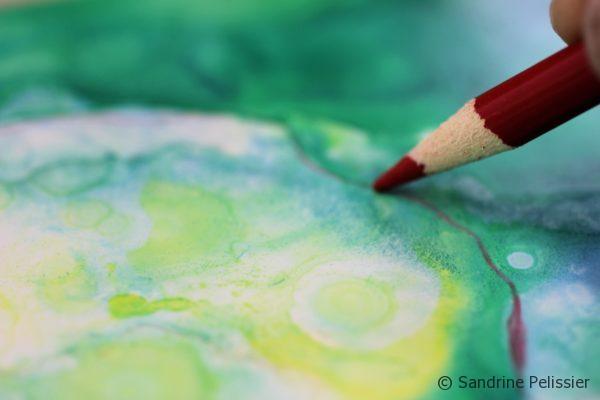
It can be very frustrating for an artist when that happens because after all, it is our uniqueness that we are trying to promote and this is what makes what we make different and valuable, this is our own vision of the world that we want to share. A theft of that vision feels almost like an identity theft.
This is a complex issue as there are many variables that can make the situation more or less easy to solve
Teaching:
Most of us artists like to share our techniques and teach as a way to connect with other artists and to supplement our income. I personally like to share my process and techniques with an audience of artists online, with the idea that most artists will be smart enough to take what they like in my teachings and make it theirs by mixing what they learned from me with many other influences. And most of the time this is what happens. In my mind, art is a satisfying process only when it leads to self expression and exploration of ones authenticity. I also acknowledge that when an artist is a beginner, they might want to copy other artists as a way to learn, and this is totally fine as long as they are not selling a whole line of copies, pretending that this was their own ideas.
I am a Blick Art Materials affiliate and I receive a small compensation for sales. That does not effect in any way the cost of the purchaser’s order but it helps me keeping the content of this blog free.

 |
Daler-Rowney FW Acrylic Water-Resistant Artists InkFW Artists Ink is an acrylic-based, pigmented, water-resistant ink in a range of 38 colors, all of which have either a three-star or four-star rating for permanence. FW Artists Inks work well with airbrushes, dip pens, technical pens and brushes. – Primary Colors Set |
Many artists email me to ask if they can sell the paintings they have done taking one of my classes and I am fine with it as long as I am cited as an influence for the work or they acknowledge that the painting was done in one of my classes. Of course if the artist style evolves other time and I was just only one of many influences, then the reference does not need to be.
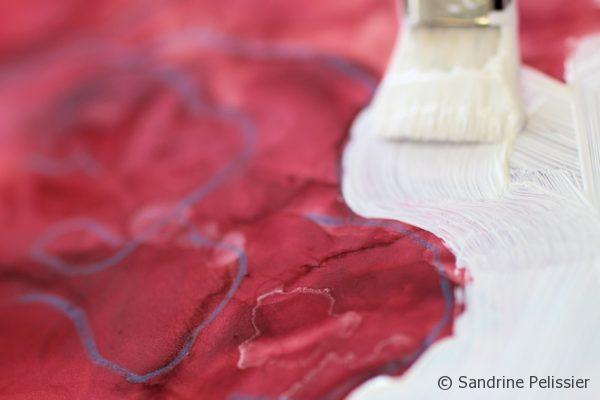
Some recent events happening where I live involving an accomplished artist made me question my willingness to share my process openly though because I realized that it is more a question of integrity and ethics than a question of law. In the eyes of the law, you can’t copyright a style, you can only copyright a specific work, so if someone starts to paint in your own style, with your own palette and compositions, using the same techniques, but does not literally copy one specific work of yours, it is still legal, although not the best way to be taken seriously as a professional artist.
I really like the “Steal like an artist” diagram by Austin Kleon as a reference to what constitute a Good theft versus a bad theft.

Proximity:
That is another factor that can be taken in account. It is easier to ignore a copycat who lives thousands of miles away from you than one who lives in your own community and will take part in the same events and exhibit in the same galleries, making it more confusing for customers to distinguish your work versus theirs.
Quality and price:
Someone copying another artist’s work is trying to find a lazy shortcut to success and did not have to make all the work it took the original artist to get organically to that point. Most of the time the copies are looking way less achieved and most of the time they will be sold at a lower price. This can hurt the most established artist sales and reputation if the overall similitudes make it confusing for the general public.
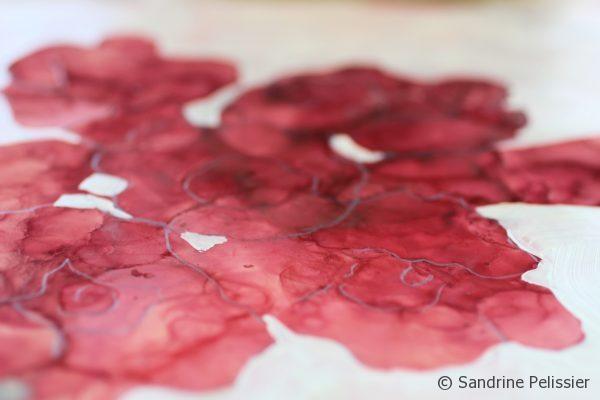
So what can you do?
Unfortunately not much in terms of legal action.
You can try contacting the artist and letting them know that you noticed many similarities between their work and yours and for most copycats that will be enough to make them realize that what they are doing is damageable for both artists. I did email once an artist who was copying my style of flower paintings and trees with patterns, she was even copying my social media posts all the while claiming on her website that “My art is a reflection of who I am”. She was disappointed to read my email because she liked my style but acknowledged that she had been wondering for a while if she was not crossing a line.
Some artists will choose to go public with the issue as did Lori McNee on Facebook with an artist who was copying specific paintings of hers : How I stopped a copycat artist on Facebook. Her case is a bit different because the artist was copying literally some of her paintings and promoting them on Facebook, which is illegal.
Then you can choose to take the high road, consider that imitation is a form of flattery so to speak and decide to not spend too much energy on the issue. Publicize your art as much as you can and make it sure serious buyers and art galleries know that your style is genuinely yours. Copycats usually get tired after a while: after all there is not much personal satisfaction in copying and they will often go from copying one artist to copying another.
What they are copying is also something you did in the past, and because you are the creative force behind the art that is being copied, you often moved on to the next step in your art journey being always one step ahead. You own the creative tools, they are just replicating an end product.



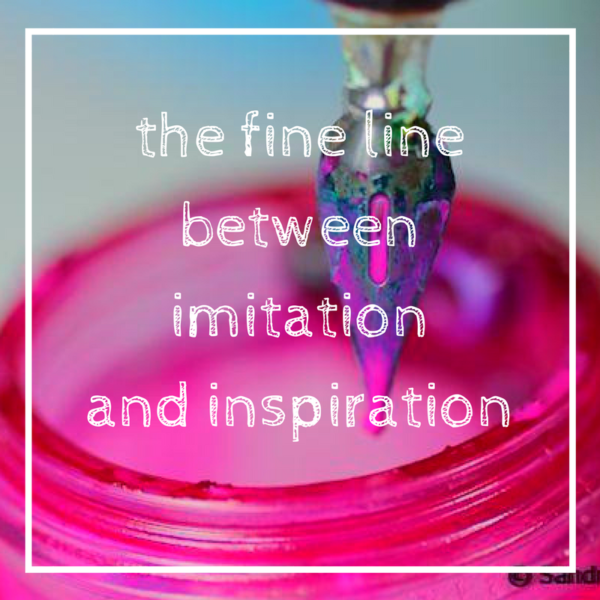

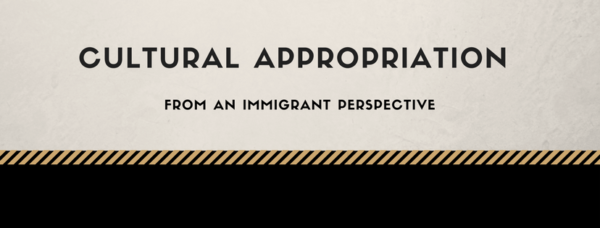




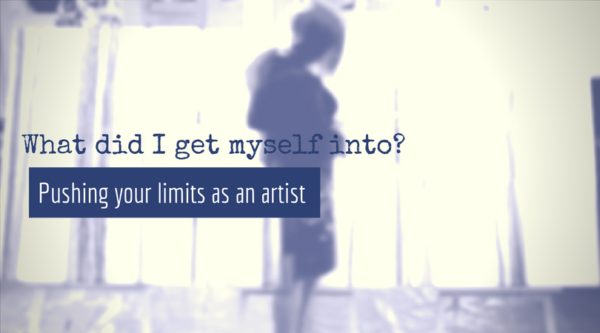
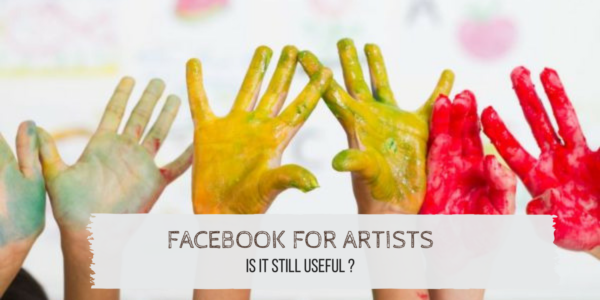


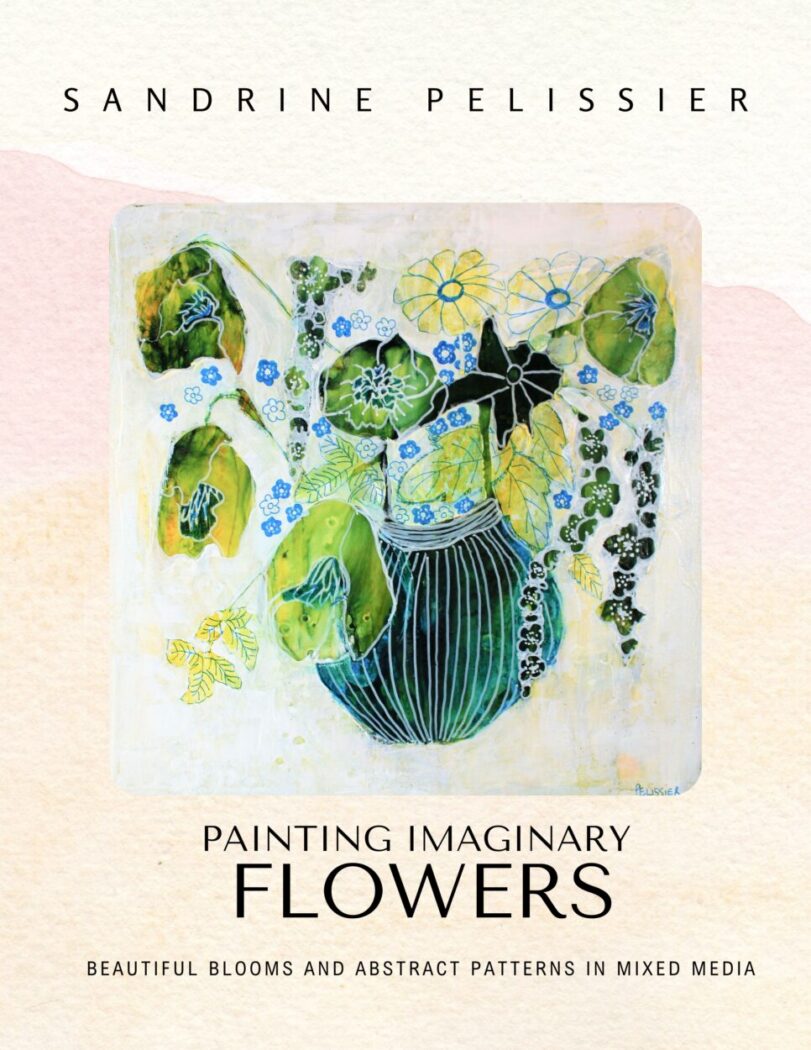
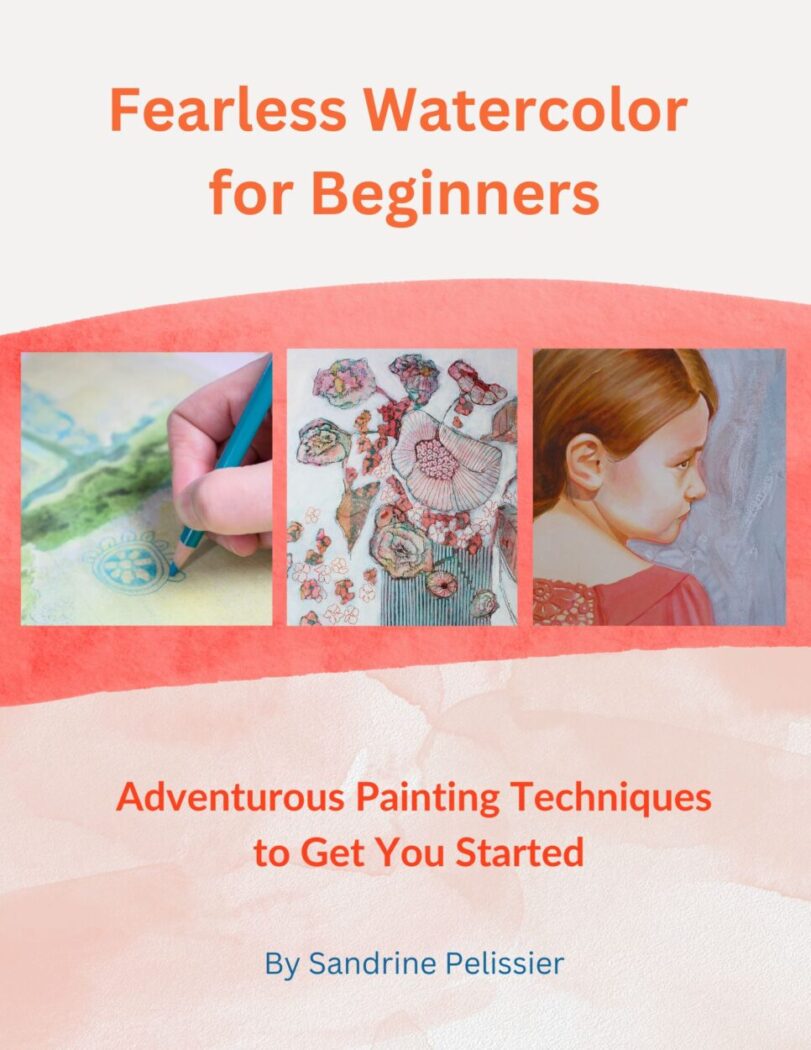

Comments (29)
Nica B.
Greetings, Sandrine!
I’ve just stumbled upon your blog while wrestling with something. I have made a photographic self-portrait, which is heavily inspired by one well-known photographer and is featured as the album cover image by one of my top favorite bands. Very classy and ethereal.
I’ve been an aspiring multimedia artist for decades but unfortunately held back too much by hardship to have enough resources for more practice and publicity.
It seems like I may need to talk to both the musician and the photographer to ask permission to display this picture. My problem is merely psychological as I feel like an ugly duckling bothering swans.
And btw, I had been copied before despite feeling invisible. A close friend of mine presented herself as an art curator helping aspiring artists. She’d post a bunch of their work on her facebook occasionally, all proper — their work not hers. I didn’t get much out of it but we were still great friends and I assumed my work ain’t that catchy.
Then suddenly she informed everyone that she’s now an artist and I was petrified to see my unfleshed ideas naively shared with her (for the time when I can afford the photoshop and more time to run my computer on solar) — those ideas were taken by her and made into art photography I had no means to create. She was rich… She published a whole art book filled with images of my written novel she-ro (unpunished as well since literature is a tough one to self-promote). There were also influences from our mutual friend, a seasoned artist so technically she “stole from more than one”.
I told her that our relationship was over, after having dropped hints here and there that her work reminds me of what I had in mind but was too limited by struggle for survival to manifest. She never admitted stealing my ideas but always said that I “inspired” her. She’d copy my style of dressing and parrot my Facebook posts… and actually did copy some of my work I tried to accomplish with limited means.
Finally I said this is it, I’m breaking up with you. She called me insane.
I used to have that coffee table book of hers, sent to me with an autograph… yuck! I’m glad it was lost in the fire.
So I know how it feels when you labored and someone steals your baby. Even though my photograph does look different the influence is still obvious. I feel really tender yet it may not be the best idea to just let it go. It comes with the story of my shadow work and the emotions invoked by the music. Which makes it even trickier and sometimes I feel like slapping myself for not being more superficial; for always choosing heavy stuff to focus on. But that’s another story .
Thank you for reading… no really.
bobexor
Hi, my girlfriend is going through the same exact situation right now. We would love to hear how this worked out/was resolved, if at all!
Sandrine Pelissier
In my personal case, I found that most people would give me credit and the ones who don’t and are looking for a shortcut to make money usually get tired pretty fast and move on to something else. To keep the motivation long term to make art, it needs to come from a genuine place and your own inspiration or at least a mix of influences that are meaningful to you.
All the best to your girlfriend, I know it can get pretty stressful.
Paul Foote
Artists have copied other artists since art began. That is how art was first taught when schools did not exist and painting and sculpting were trades. Many of the great masters would take their students’ best work, sign it as their own and sell it. Their reasoning was the students learned their craft from the master and everything they created belonged to him as long as they were under his tuteledge. Even today many schools encourage students to copy art that is in museums to learn the craft. This is not a problem unless they sign the name of the original artist to the work. They should sign their own name.
I use other artists work to inspire my own. But I have also discovered that techniques I thought were my own in use by other artists. These were just local artists, but we had never met and to my knowledge, they had never seen my work unless they saw it on my website. Their use of the techniques was different than mine, but it was the same technique. I found it interesting and in some ways inspiring.
Dearbhla McArdle
Hi Sandrine. I have really learned a lot from this blog and the comments posted below. I think what I am about to say may not necessarily be as relevant as the comments of the established artists who have posted comments. I have been an amateur artist for over forty years although I have been lucky enough to have sold a fair percentage of my work during that time. It is not, however, how I earn a living. Obviously, over such a long time span I have experimented working with various mediums but I think I have a personal style that comes through in most of my work. But then…BOOM. Along came the internet and not long after we got YouTube. Suddenly the net was awash with artists showcasing their work, giving free video tutorials and now, on Facebook we have Patreon where we can learn techniques from an artist we like for a nominal fee. Well, for me, I felt like a child let loose in a toy shop. Here were all these amazing artists posting videos of how to paint this, that and the other and I was hooked. Naturally, I found myself drawn to some artists work more than others and would invest a great deal of time trying to replicate what they were showing us in these free tutorials and I will not lie, I regularly posted the results of my work and often sold paintings on the back of it. Until today I had absolutely no idea that I was doing anything wrong. There was nothing there to say that I should give credit to the artist if I used a painting derived from the tutorials they freely gave. How could I have known that as I didn’t feel I was sneakily copying something that had been put out there for anyone’s use? It was only when I joined a Patreon membership and was working one-to-one with an artist that I asked him the question – ‘If I try to sell a painting that has come about as a result of these classes should I give some credit to you?’ and he said I should mark the painting ‘After (his name)’ and I did. I still don’t know if what I had been doing was ‘copying’ or, at least copying without permission. I can’t think why these artists would leave themselves open to plagerism like that unless it was not an issue for them so I still don’t really understand why these professionals post their work so freely whilst knowing that people will try to replicate it and potentially sell it as their own. I am not trying to justify copying. I fully understand what you are saying but YouTube has really opened the floodgates for this kind of thing to happen. Just one last thing which is relevant, Sandrine, I am a member of a facebook page where we post pictures of our paintings and one day I saw a painting that looked VERY familiar to me. So I made the comment, ‘That’s beautiful and very reminiscent of Sandrine Pelissier’s paintings’. I recognised it as an exact copy of one of your ‘Imagined Flowers’ paintings as I had spent some time learning this technique (not copying) several years ago. She deleted the post a few minutes later ?. You see, I am useful for some things and this happened on a UK based page!
Sandrine Pelissier
Thanks Dearbhla for your comment. It is great to see that many artists, like you have a good sense of what is ethical to do. Thanks also for posting the comment on the Facebook page 🙂
Anna
I sell my works on an auction site and as soon as someone has a style that garners hefty bids, out come the copycats.
I’ve been selling since 2006 and have worked to hone my skills and get noticed with my hand painted works. In the beginning I was practically giving my art away since I was unknown and didn’t get many bids. I’ve worked long and hard to get my style solidified and to get a following only to see a couple of relative newcomers using many elements of my style and subject matter – to the point where it is very obvious that they’re mimics and now they’re getting hefty bids from the get go and it really does grind my gears.
Actually that’s putting it lightly. It makes me freaking furious.
It also gives me anxiety that I need to stay one step ahead of them to remain unique and also it makes me wonder if some of the newer bidders might think I’M the copycat.
I’ve been careful not to copy anyone on the platform over the years and to stay in my lane. I know that there are very few things in the art world that aren’t derivative of other works – but I would not mimic someone to the point that my work is often mistaken for theirs. It’s just not right. I don’t think copying non-living artists is as terrible though. After I’m gone, I couldn’t give a hoot. LOL
What have I done about it? Other than rant and rave to my husband about it, I don’t think there’s much I can do. Often, these days if you call people out, you’re likely to start something that makes it all even more of a PITA, especially since we share the same customers.
B.
I have my first copycat, so I figured I would comment about it. I do very complex, psychedelic, surreal drawings in pen, with little to no planning and it is all free hand. There is a handsome, trendy film maker who likes my art and has used it in his films. He likes me, but I am married.
He started dating an artist who is a few years younger than me, but looks similiar and has a similiar name. She does tech art and impressionist paintings. She started following my Instagram and has since produced works of art that mimick mine. Hers are not as good. They have a clumsy, childlike quality. Her whole style changed and now she is trying to draw just like me to impress this cassanova guy. I don’t know if he asked her to draw like me or what, but she has lots of art events and shows in town. She unfollowed me and seems to be hostile towards me, yet she is emulating my style. She’s like a doppelganger.
Sandrine Pelissier
Wow! This is the next level of copycat as it affects your art but also your romantic life. I also noticed that the work produced by copycats is not as good and a watered down version. You are the original and you had the skills and talent to produce something original, nobody can take that from you 🙂
Joseph Donnelly
I am a part time artist and post art to various groups on facebook one of these groups called master copy gives you an artist to paint for the month and you copy one of their masterpieces. So far we have done Pissaro, Sorrella , Turner and Klimt, I enjoy this excersise but thought I would like to add my own little twist by keeping the composition the same but up dating it a little by putting it in a more modern context. I put this in the comments for this months artist who is to be Edward Hopper but got a sort of Pedantic reply to say no this group is called master copy and you must copy the artist. I feel this out look is being a bit silly so I am going to do 2, my version and their copy but will not post my version on their group. Do you think they are correct? I feel as if I might as well take a picture.
Sandrine
Well, I guess there is no right or wrong and it is mostly a different philosophy. Some artists think copying nature or a master artist while staying as close as possible to the reference is a goal to achieve and some artists like me put more an emphasis on creativity and developing your own style. I like that you get creative and add a bit of yourself to a copy but maybe that group is not the place to do so. You can ask if they would agree if you post both versions?
raveonstudio
I had a similar experience and called out the artist on facebook as did many of my followers and fans. I also sent a cease and desist and that seemed to work. She was in Australia, so I don’t know for sure, but she said she destroyed the work, she did (I know for a fact) and donated the proceeds the had made to the charity of my choice. I posted this letter in the end – I hope this never happens to anybody, it is a terrible thing to go through – crushing. Sadly I know it happens all the time.
Dear _________,
I had to wait another day before I could write to you without anger. I want to have compassion for you, because there must have been something in your life that brought you to this place, where after taking classes with professional artists who I know have taught you not to copy them, but to seek your own voice and style, you have still felt the urge to copy my work and sell it as your own.
I believe you when you say you didn’t think you were doing anything wrong, but I want to tell you that what you did was terribly wrong, and in fact theft. You took my ideas and reproduced them for sale with your name written on the work. While there may be other people who feel this is ok, and sell you a pattern or encourage you to use their design, I was not one of those people, and never gave you permission to copy my work so closely, knowing exactly what it encompassed, being an owner of a number of my pieces.
As a working artist, this is my sole income, and when you stole my design from me, you took money out of my pocket for art supplies and food from our table, because this is what I do to earn money for these things. Knowing where it is that you work, you should be aware of this. There are people in your life who possibly think that there is nothing wrong with what you did, but I am telling you now, that in this day and age on the internet where everything is posted online, it is still not ok to steal somebody else’s ideas, things they have worked hard at. We post our work online to gain an audience in hopes that somebody may purchase our work, as you have, not steal it like you also have done.
Would you think before stealing a song I wrote or a book? It is the same scale.
I just want you to know, and be truly sorry for what you have done and please try really hard not to do it again. If it was an act without thought, then please bring some deep contemplation into your days, and when you think of picking up a paintbrush, that it is with your own thoughts and ideas in mind. Please paint from your childhood, or paint your landscape. You don’t need to copy anybody else’s work for it to be beautiful and saleable.
Your work is good enough because it is a part of you, and you don’t need to tie your self-worth up into your work. That’s not how it’s meant to be. Your work is your voice, so, you don’t need my voice, you really do have your own. Be authentic.
Jenn ?
Sandrine
That is such a well written letter Jen, thanks for sharing !
I am also a firm believer that your work should reflect your own voice, there is no point in making art otherwise. Unfortunately I think some people are looking at shortcuts to be successful, even at the price of authenticity or self expression.
Lori McNamara
May I use part of your letter? I just got copied on face book.
Sandrine Pelissier
Sure, feel free to share my content, as long as I am referred as the source.
Sorry to hear you got copied, it is always disheartening.
Juliana
Excellent Article! And I so value your sharing your work, and ideas as well. I always share WHO I learned from with others.
This notion of learning a technique came up a lot when I was learning how to do Faux Finishes from a specialized class with a Proprietary Product line. We had to make our OWN sample boards, following the lesson from a trained Faux Artist. Not one gal in the class could match the Teacher’s style. In fact, it was the only way to learn how to use a trowel, or lay the various layers of plaster, glazes, etc. When it was all said and done – the final product was YOUR style and no on in the classroom looks Exactly like the Teachers’.
BUT – this also brought up the same question – IF someone wanted to Share YOUR Sample board with another artist – WE were told NOT to do this. 1. YOU spent the time and money to learn the technique. 2. No one has the product knowledge you do – and even IF you could make it exact – you had to HAVE the license to use the product. 3. It still comes down to your Own Hand in the matter – and sometimes this also meant, you had to do the WHOLE JOB yourself. When a FINISH has 6 or more layers – you either better have a good memory, or your Recipe Book.
Over time, I spent over 15,000 dollars in classes and even more in product or inventory. Why would I want to give THAT away to a budding Faux Artisan for free?
So I get it – YOUR generosity is good up to a Point. I’m older, never had the artistic training I always desired. And honestly, I don’t want to learn how to paint like someone else…I just want to know HOW did they do “that’ technique – but not to Paint like them. Over time, I will incorporate the Technique into my own style….OR venture into a mixture of ideas into something I can do Alone on My Own – With my Own slant. Techniques are taught in school…and then it’s up to US to venture to the Edge to change it, if possible.
I know in my area of the country, folks are always stealing an idea – and honestly, I won’t teach a class … unless I make it totally my own, and only IF I’m willing to take the chance, that someone might be able to Progress $$$$ further.
I’ve seen this done with Paint and Wine Parties. It’s an easy way to make money – but that doesn’t make them an Artist. Nor does that TEACH artistry.
True Artists are willing to take chances that something might not work out – OR they have AHA! moments in the process. For me, it’s learning how paints work with one another, or seeing someone’s idea and curiosity will make me check it out. But IT IS STILL the Other Person’s – and that doesn’t make me Feel as IF I’m growing in MY OWN Moment…when I do so.
I am grateful for the opportunities you have share to help all of US learn … still by the end, we still have to find Our Own way, to feel truly connect to Our Art.
Much like the Way China sells knockoffs – Pales in comparison to the Real Deal. When I have a Real Deal of my own work…I stand really proud of my own accomplishments.
Thanks my friend …. Your are brave! And your work stands on it’s own
Juliana
Sally Baker
I enjoy doing large scale copies of famous artists works that I hang in my own home. It’s a bit quirky and fun. The gallery where I sell my own paintings does not allow copies to be sold there. When I once questioned the owner about another artist’s painting that I thought resembled too closely a museum painting I was told it was just my opinion. And she let the work remain. I guess it’s all subjective.
Marjanne S
Something different happened to me. In June last year I made a painting for a class I’m in. Over the summer I got an American newsletter of an art magazine with a picture of the same idea in it (only better, lol). Not only was I not as original as I thought, the other person could accuse me of copying. I didn’t know her at all and I know where my inspiration came from, but still…..
Sandrine
Yes, it is true that artists can end up with similar results by chance, usually they are still a bit different though. Most copycats are pretty obvious in their copying.
Tutleymutley
I haven’t had the problem of being copied (I’m not THAT advanced!) but I just want to say how much I appreciate you sharing your techniques and ideas with us folk following behind.(in your footsteps). I always acknowledge my source and inspiration (I hope). A BIG thankyou from me – and I’m sad that this openness of yours has made you more vulnerable to blatant copy cats. I’m a knitter – and it happens a LOT in the textile world too.
Sandrine
Yes, I think it happens in pretty much every domain unfortunately.
Thanks, I am happy to hear you are enjoying the tutorials 🙂
Emma Taylor
It’s a tough one: sincerest flattery or major infringement?
Everyone learns through imitating but deliberately presenting work as your own which is wholesale copied is wrong and should be stopped if at all possible. It benefits nobody in the end.
Aislinn Graves
I am a student artist following tutorials and learning at the feet of
masters. 🙂 I make sure when I post my paintings to say original design
by…
I am blessed that my teachers allow us to share and even sell our work and I think I am starting to develop my own style :crossing fingers: but at this point still feel like I am just a little ahead of oh wow! I made a mark! 😀
Abigail Johnson
Thoughtful article on a challenging topic. The process of copying artists is a good way to learn skills and has a long tradition in the art world. Hopefully we then branch out and create our own unique work that we share with the public. Copyright is a complex issue and you have raised good questions to consider. Thank you.
Johanne Morin
I am one of those begginers that copy work of various artists in order to learn techniques and styles. Most of the time, I buy their book and try to copy some of the paintings following the instructions in the book, or I do so from the artists’ website. I mostly give my paintings to family. If professionnal artists stopped sharing their process fearing copycats, begginers like me would lose a great source of help and inspiration. For the one copycat out there, there are thousands of begginers who truely benefit from the openess of artists who are confident enough to put themself out there to help us learn and develop our own style.
Aislinn Graves
Well said, and like you, I am a student artist following tutorials and learning at the feet of masters. 🙂 I make sure when I post my paintings to say original design by…
Mona Kuntz
Johanne, I’m with you. I try to figure out how artists achieved their work by copying their work — and sometimes I’m successful and sometimes not. I also have never sold any paintings — but I’ve given quite a few away. That said, I always write a note on the back of the canvas that says something like: “This artwork was inspired by (artist’s name)’s painting (name of copied painting). My version of this art inspiration is called (whatever I call it).” I also add the date and my signature. I do want to acknowledge that I’m copying a piece of someone else’s art. However, I’m slowly developing my own style and subjects, and I think that down the road soon I’ll be able to let go of the crutch of copying other people’s art. At least, I hope that I will. That said, I think a great deal of art can be considered derivative in some form or fashion — everyone gets their ideas or inspiration from somewhere and tries to make it their own. Here’s to the day when I feel brave enough to take a painting that comes from my own head and put it out there to sell it.
Donna
I once took a class from Jean Grastorf who does a watercolor pouring technique with layers of masking in between layers. It was very work intensive. She had catalogs from big national shows where artists had copied her technique and even her subject matter which was often was palms and coconuts. I asked her what she thought about it. She said “it’s out there” because she teaches it and she is widely exhibited. She said 90% of her students do not ever do another poured painting outside of class so there is this 10% who adapt or copy. I took a class from another artist who uses Jean’s technique with modifications in subject matter and is considered a protégés. I recently saw Jean had an award for a painting she did for NWS. It doesn’t seem to faze her. Cream rises to the top!
Krista Hasson
Hi Sandrine,
Great article. I am a watercolor artist specializing in watercolor batik. I find that when you do anything different people will try to copy it. I had an instance where a lady actually copied one of my paintings off my website. She the proceeded to try to enter it into a show. She made the mistake of telling the organizer that it was actually done of of one of my paintings so thank goodness the organizer had the integrity to tell her that she could not do that. Tha lady then emailed me looking for my consent to enter it into the show. Of course I said no and politely explained to her that I was in galleries and that it would hurt not only me but her in the long run. Hopefully she founf her own inspiration after that :). This lady did not realize and thank goodness she was an honest person. Sadly I am sure that there are all kinds of people out there claiming work as their own, that know better. Hopefully your article will educate the ones that don’t know. Thanks